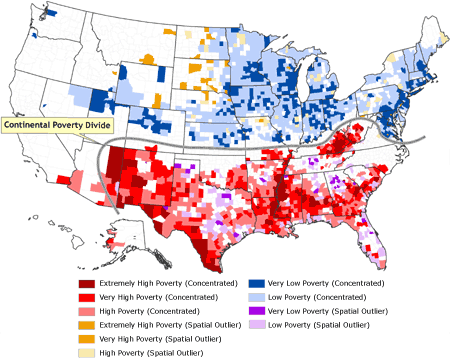U.S. Census data showed decreases in the poverty rate for Memphis from 29.8% in 2013 to 26.2% in 2015, a decline of 12%.
Meanwhile, the child poverty rate dropped from 46.9% to 43% for an 8% decline. Among African Americans, the poverty rate fell from 34.4% in 2013 to 30.1% in 2015.
“Memphis is making great strides toward reducing poverty,” wrote Dr. Elena Delavega, Department of Social Work and Benjamin L. Hooks Institute for Social Change at University of Memphis, in her 2016 definitive report on poverty in our community: “Overall poverty and child poverty have decreased in more than three percentile points, which is very encouraging.”
She added: “It is too early to tell whether we are moving toward racial equality, but if current trends continue, it may indeed be happening in Memphis.”
It’s hard for the reductions in poverty not to be a confidence booster when a noted expert like Dr. Delavega strikes such a hopeful note about them.
The Right Direction
The declines are the latest indications that Memphis is moving decisively in the right decision in returning to pre-Great Recession levels in key economic indicators. As we have written often, Memphis was predicted to be one of the last cities to rebound to those pre-recession levels – predicted for the last quarter of next year – but it’s encouraging to see some relief in poverty levels that had reached crisis levels.
Of course, a three point decrease doesn’t mean the crisis is over. Our suspicion is that a large number of the people who moved out of federally defined poverty are just barely over the line and are still struggling mightily. But it doesn’t mean that we shouldn’t take a moment to celebrate some progress before we return – and redouble ourselves – to the hard work of fighting structural poverty in Memphis, Shelby County, and the Memphis MSA.
Of all the poverty statistics, the one that especially matters to all of us in this community is the one for child poverty. Our children in poverty are the ultimate canaries in the coal mine, and only when we make dramatic strides in improving their lives can be truly celebrate. But in keeping with our optimistic outlook, it is worth remembering that while the child poverty rate in Memphis fell 12.5%, it only fell 4.7% nationally.
But if we need a reminder about the crisis conditions in which too many Memphis children are living, it’s this: the percentage of African American children under 18 years of age fell from 53% to 47%, and while statistics for Latino children isn’t available, it’s a safe bet that it is still about 10 points higher than African Americans.
It’s About Children
That said, for the first time since 2010, the poverty rate went down. As Dr. Delavega previously wrote: “Children continue suffering the greatest rates of poverty.” That has not changed, which led us to delve into more details about the lives of Memphis’ children.
Here are a few that captured our attention from Annie E. Casey Foundation’s Kids County Data Center:
42% – Children whose parents lack secure employment (it was 51% in 2010)
38% – Children in low-income working families
13% – Teens 16-19 not attending school and not working
53% – Children living in households with a high housing cost burden
17% – Children living in crowded housing
21% – Children in extreme poverty
35% – Persons 18-24 in poverty
14% – Married couples with children below poverty
47% – Single parent families with children
50% – Children living in high poverty areas
11% – Children who speak a language other than English at home
8% – Children living with cohabiting domestic partners
More Stats
62% – Children in single-parent families
6% – Children living with neither parent
20% – Children with household head not a high school graduate
55% – Children with household head with high school diploma or GED
6% – Children with household head with associate’s degree
10% – Children with household head with bachelor’s degree
8% – Children with household head with graduate degree
20% – Teen births to women who were already mothers
17% – Preterm births
12.2% – Low birthweight babies
42% – Children whose parents lack secure employment (51% in 2010)
$29,800 – Median family income among households with children
***
Join us at the Smart City Memphis Facebook page for daily articles, reports, and commentaries relevant to Memphis and the conversations that begin here.





Thanks, President Obama: Mission accomplished.
Mission accomplished is GW Bush’s tagline, douchebag.
I suspect that he was being ironic.
Memphis has few reasons to be hopeful.
This city sucks big time.
Rock bottom.
Dirt poor, crime ridden, backward.
Without doubt, even Detroit is a much better place to live than Memphis.
Donald Trump wears little girl panties to cover up his small penis. Most of his followers are aged white men with similarly endowed penises. Anon 9:11 here.
Memphis will always rank as one of the most poverty stricken cities in the US. You can count on the continued decline of Memphis because of two big issues: poverty and crime.